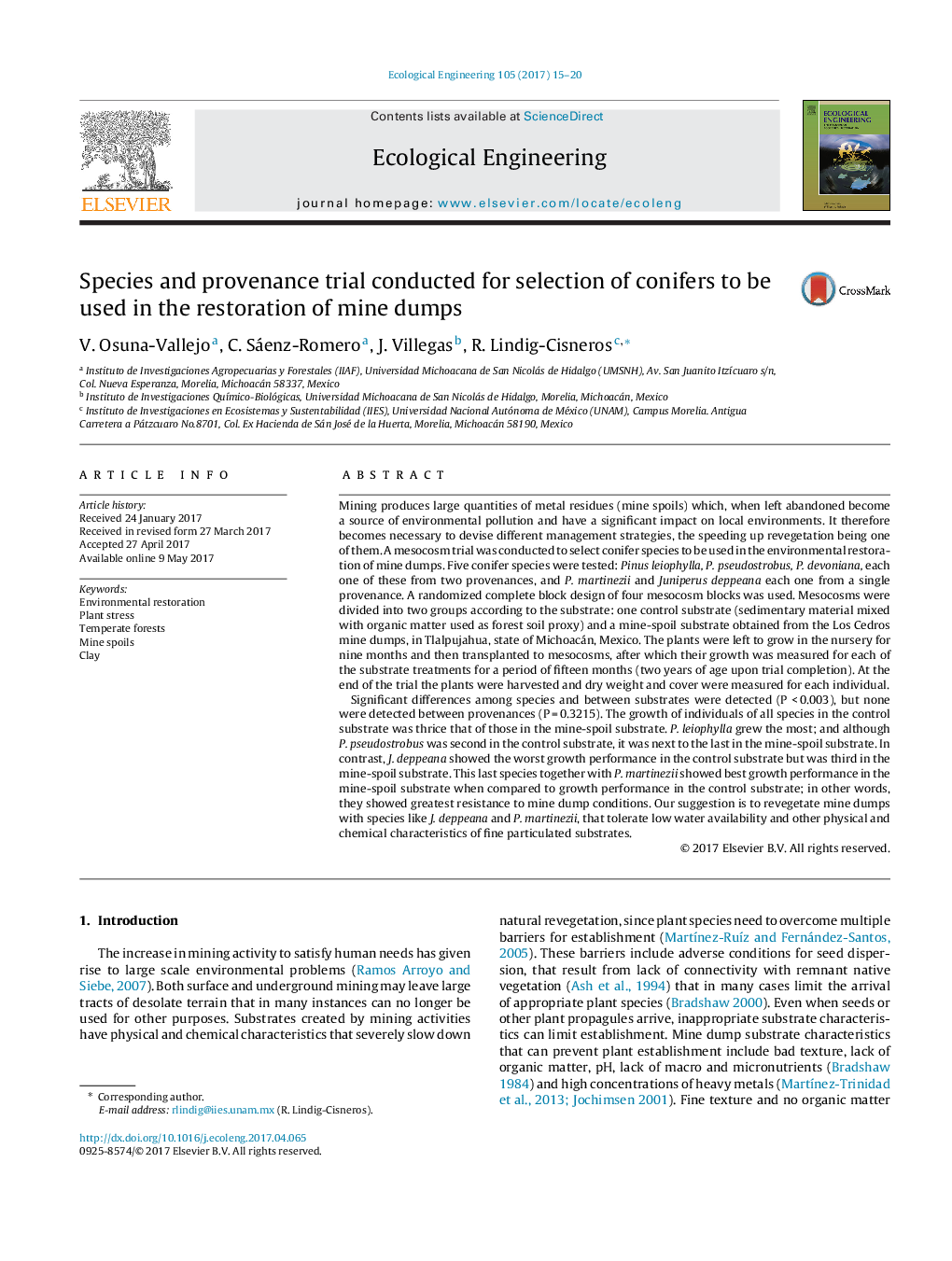| کد مقاله | کد نشریه | سال انتشار | مقاله انگلیسی | نسخه تمام متن |
|---|---|---|---|---|
| 5743594 | 1617996 | 2017 | 6 صفحه PDF | دانلود رایگان |
Mining produces large quantities of metal residues (mine spoils) which, when left abandoned become a source of environmental pollution and have a significant impact on local environments. It therefore becomes necessary to devise different management strategies, the speeding up revegetation being one of them. A mesocosm trial was conducted to select conifer species to be used in the environmental restoration of mine dumps. Five conifer species were tested: Pinus leiophylla, P. pseudostrobus, P. devoniana, each one of these from two provenances, and P. martinezii and Juniperus deppeana each one from a single provenance. A randomized complete block design of four mesocosm blocks was used. Mesocosms were divided into two groups according to the substrate: one control substrate (sedimentary material mixed with organic matter used as forest soil proxy) and a mine-spoil substrate obtained from the Los Cedros mine dumps, in Tlalpujahua, state of Michoacán, Mexico. The plants were left to grow in the nursery for nine months and then transplanted to mesocosms, after which their growth was measured for each of the substrate treatments for a period of fifteen months (two years of age upon trial completion). At the end of the trial the plants were harvested and dry weight and cover were measured for each individual.Significant differences among species and between substrates were detected (P <Â 0.003), but none were detected between provenances (PÂ =Â 0.3215). The growth of individuals of all species in the control substrate was thrice that of those in the mine-spoil substrate. P. leiophylla grew the most; and although P. pseudostrobus was second in the control substrate, it was next to the last in the mine-spoil substrate. In contrast, J. deppeana showed the worst growth performance in the control substrate but was third in the mine-spoil substrate. This last species together with P. martinezii showed best growth performance in the mine-spoil substrate when compared to growth performance in the control substrate; in other words, they showed greatest resistance to mine dump conditions. Our suggestion is to revegetate mine dumps with species like J. deppeana and P. martinezii, that tolerate low water availability and other physical and chemical characteristics of fine particulated substrates.
Journal: Ecological Engineering - Volume 105, August 2017, Pages 15-20
